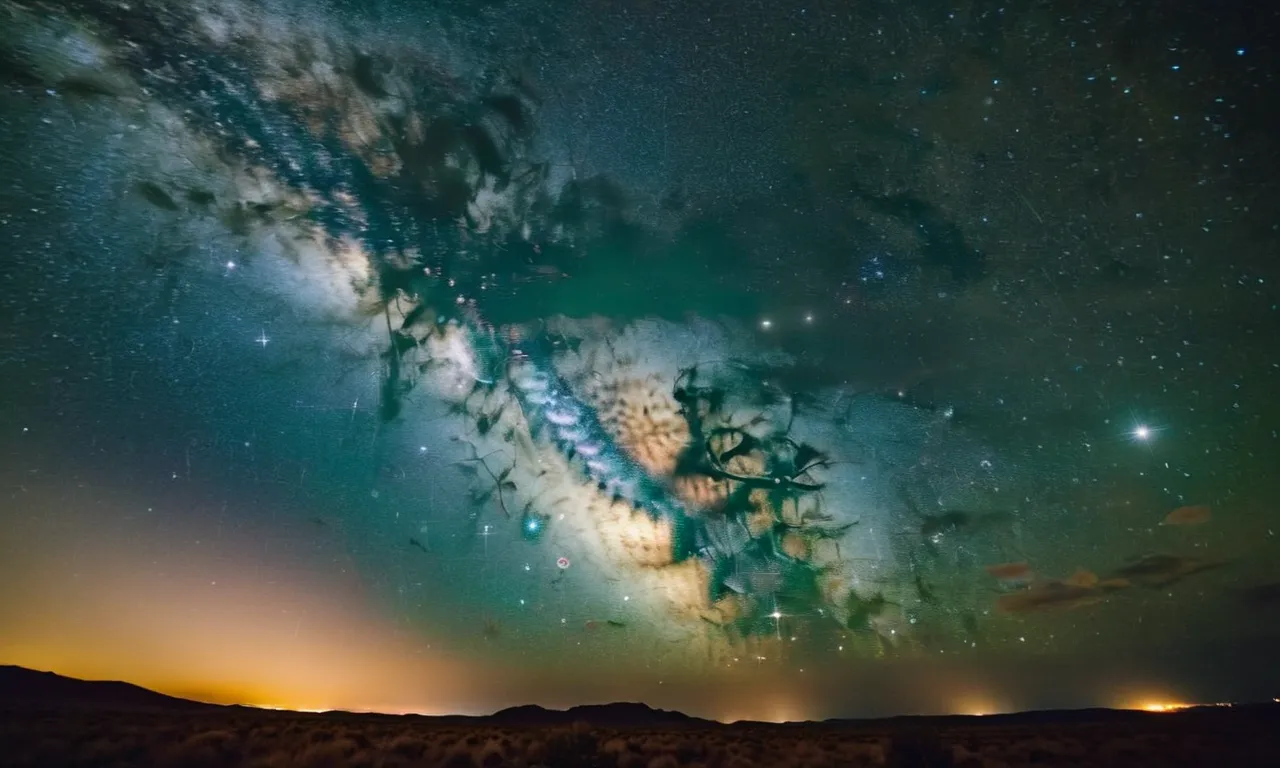What Does The Bible Say About Stars?
The night sky has captivated humanity since the beginning of time. When we gaze up at the stars, we can’t help but marvel at their beauty and mystery. This leads many to wonder – what does the Bible say about stars?
If you’re short on time, here’s a quick answer: The Bible refers to stars frequently, describing how God created the stars on the 4th day and set them in place to give light, determine seasons, signifying events, and even symbolizing God’s people.
Keep reading as we explore over 15 Bible verses about stars.
In this comprehensive guide, we will analyze key passages about stars throughout the Old and New Testaments. We’ll cover the origins of stars, their purposes, symbolic meanings, and references to fallen stars.
With over 20 relevant verses, you’ll get a full understanding of the biblical significance of these celestial bodies.
The Origins of Stars in the Creation Story
God Created the Stars on the 4th Day
According to the biblical creation story in Genesis 1, God created the stars on the fourth day of creation: “And God said, Let there be lights in the firmament of the heaven to divide the day from the night; and let them be for signs, and for seasons, and for days, and years: And let them be for lights in the firmament of the heaven to give light upon the earth: and it was so.
And God made two great lights; the greater light to rule the day, and the lesser light to rule the night: he made the stars also” (Genesis 1:14-16).
This passage indicates that on the fourth day of creation, God made the sun, moon, and stars. The sun and moon are described as the “greater” and “lesser” lights to govern the day and night, while the stars are mentioned almost as an afterthought.
Still, this establishes that according to the Genesis account, the stars were created by God on the fourth day to give light to the Earth.
Stars Give Light and Mark Seasons
The Genesis account gives two purposes for the creation of the stars:
- To give light upon the Earth
- To mark seasons, days, and years
The stars, including our sun, provide light during the day and allow for the cycles of day and night. The regular, predictable motions of the stars and constellations were also useful for ancient people to mark the passage of seasons for planting and harvesting crops, track the length of years, and establish calendars.
The Psalmist also speaks of the stars “That made great lights: for his mercy endureth for ever: The sun to rule by day: for his mercy endureth for ever: The moon and stars to rule by night: for his mercy endureth for ever” (Psalm 136:7-9).
Here the divinely-ordained purposes of the stars are reiterated.
Throughout the Bible, the stars are portrayed as marvels created by God to give light, mark time, and display His glory: “The heavens declare the glory of God; and the firmament sheweth his handywork” (Psalm 19:1).
Though eclipsed by the glory of their Creator, the stars remind us of the magnificence, order, and care with which God crafted the universe for humanity’s habitation.
Stars as Signs and Symbols
The Star of Bethlehem
The Star of Bethlehem is one of the most famous stars in the Bible. It appeared in the sky around the time Jesus was born and led the Magi from the East to find the infant Jesus (Matthew 2:1-12). There are various theories on what this celestial phenomenon could have been – perhaps a supernova, a planetary conjunction, or a comet.
Regardless, it was interpreted as a sign from God announcing the birth of the Messiah. The Star of Bethlehem reminds us that God uses natural phenomena at times as signs to point people to Christ.
Stars Symbolizing God’s People
Stars are sometimes used symbolically in the Bible to represent God’s people. For example, Joseph had a dream where the sun, moon, and eleven stars bowed down to him (Genesis 37:9). This dream symbolized that Joseph’s father, mother, and eleven brothers would one day bow down to him.
In the book of Daniel, righteous people are referred to as “stars” that will shine forever (Daniel 12:3). And the book of Revelation talks about a crown of twelve stars, representing the twelve tribes of Israel (Revelation 12:1).
So stars can symbolize God’s chosen people, reminding us that as believers we are meant to shine like stars in the midst of darkness (Philippians 2:15).
Fallen Stars Representing Fallen Angels
Fallen stars in the Bible refer to angels who rebelled against God. Revelation 12:4 speaks of a dragon sweeping a third of the stars from heaven and casting them down to earth. This image depicts Satan bringing down other angels in his rebellion.
The prophet Isaiah also refers to the fall of the king of Babylon with imagery of a fallen star: “How you have fallen from heaven, O morning star, son of the dawn!” (Isaiah 14:12). So stars falling or being cast down can represent Satan and demons losing their exalted positions as angels.
This teaches us that pride and rebellion against God has cosmic consequences, resulting in a loss of status for Satan and his angels. Yet there is hope, because through Christ the power of sin and evil has been defeated (Colossians 2:15).
Practical and Poetic Mentions of Stars
Descriptions of the Number and Beauty of Stars
The Bible contains many references to the vast number and striking beauty of the stars. Genesis 15:5 tells of God promising Abraham that his descendants would be as numerous as “the stars of the heavens.”
The Psalms also describe the glory of the starry hosts: “When I consider your heavens, the work of your fingers, the moon and the stars, which you have set in place, what is mankind that you are mindful of them, human beings that you care for them?” (Psalm 8:3-4).
Psalm 147 praises God as the one “who determines the number of the stars and calls them each by name.” These passages showcase the stars as a stunning demonstration of God’s creative power.
Astronomical data from NASA estimates there are around 100 billion galaxies in the observable universe, each containing billions of stars. Though these precise statistics were not known to the biblical authors, they still expressed a sense of awe at the vast multitudes of celestial lights ordained by the Creator.
As Psalm 19:1 declares, “The heavens declare the glory of God; the skies proclaim the work of his hands.”
Stars in Metaphors and Comparisons
The Bible also uses stars in metaphors and similes to illustrate spiritual truths. Daniel 12:3 says that those who are wise and lead others to righteousness “will shine like the brightness of the heavens, and those who lead many to righteousness, like the stars for ever and ever.”
This suggests that faithful followers of God will be rewarded with a splendor comparable to the most radiant heavenly bodies.
The Book of Revelation contains a vision where Jesus holds seven stars in his right hand (Rev 1:16), later revealed to represent the angels of the seven churches (Rev 1:20). This symbolizes Christ’s authority over the churches and his role in guiding them.
In Revelation 22:16, Jesus calls himself “the bright Morning Star”, representing how he brings the light of salvation. And Philippians 2:15 encourages believers to “shine like stars in the universe”, meaning they should exemplify purity and virtue in the midst of a darkened world.
Just as the stars illuminate the night skies, the light of Christ in his people can dispel spiritual darkness.
Conclusion
From their origins to their symbolic meanings, the Bible has much to say about stars. We learned that God created the stars on the 4th day to give light and mark seasons. Stars like the Star of Bethlehem signify important events, while metaphors using stars illustrate spiritual truths.
Studying these scriptures gives us profound insight into God’s glorious creativity.
The next time you look up at the night sky, consider what the Bible teaches about stars. Let it lead you into worship of the God who spoke the stars into existence and set them in place for signs and seasons.
Gaze at their beauty, study their spiritual meanings, and ultimately glorify the Creator of the heavens.








